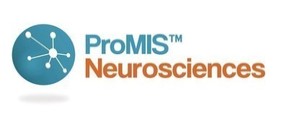ITEM 2. FINANCIAL INFORMATION
MANAGEMENT’S DISCUSSION AND ANALYSIS OF FINANCIAL CONDITION AND RESULTS OF OPERATIONS
All references in this management’s discussion and analysis of financial condition and results of operations, or MD&A, to the “Company”, “ProMIS”, “we”, “us”, or “our” refer to ProMIS Neurosciences Inc., unless otherwise indicated or the context requires otherwise. The following MD&A is prepared as of May 15, 2023 for the three months ended March 31, 2023 and should be read in conjunction with the audited consolidated financial statements for the year ended December 31, 2022 and 2021 included in the Company’s Annual Report on Form 10-K and the unaudited condensed consolidated interim financial statements for the three months ended March 31, 2023 and 2022 included in this Quarterly Report on Form 10-Q (collectively,the “Financial Statements”), which have been prepared by management in accordance with GAAP as issued by the FASB. All dollar amounts refer to United States dollars, except as stated otherwise. Unless otherwise stated herein, all share and per share numbers relating to the Company’s Common Shares prior to the effectiveness of the Reverse Share Split have been adjusted to give effect to the Reverse Share Split.
Overview
We are applying our patented technology platform to build a portfolio of antibody therapies and therapeutic vaccines in neurodegenerative diseases and other protein-misfolding diseases, with a focus on Alzheimer’s disease (AD), multiple system atrophy (MSA), and amyotrophic lateral sclerosis (ALS). We believe these diseases share a common biologic cause — misfolded versions of proteins, that otherwise perform a normal function, becoming toxic and killing neurons, resulting in disease. ProMIS’ technology platform enables drug discovery through a combination of protein biology, physics and supercomputing. We believe this platform provides a potential advantage in selectively targeting the toxic misfolded proteins with therapeutics or detecting them with diagnostics.
We are developing a pipeline of antibodies aimed at selectively targeting misfolded toxic forms of proteins that drive neurodegenerative diseases without interfering with the essential functions of the same properly folded proteins. Our product candidates are PMN310, PMN267, and PMN442. Our lead product candidate is PMN310, a monoclonal antibody designed to treat AD by selectively targeting toxic, misfolded oligomers of amyloid-beta. PMN267 is our second lead product candidate targeting ALS. It has been shown in preclinical studies to selectively recognize misfolded, cytoplasmic TDP-43 aggregates without interacting with normal TDP-43. Misfolded TDP-43 is believed to play an important role in the development of ALS. In light of research suggesting that misfolded toxic a-syn is a primary driver of disease in synucleinopathies such as MSA and Parkinson’s disease, our third lead product candidate, PMN442, shows robust binding to pathogenic a-syn oligomers and seeding fibrils in preclinical studies, with negligible binding to a-syn monomers and physiologic tetramers which are required for normal neuronal function. We also have earlier stage preclinical programs and a project to refine our discovery algorithm using machine learning as highlighted in the “Other Key Projects” section below.
We are incorporated under the Canada Business Corporation Act and located at 1920 Yonge Street, Toronto, Ontario. We are traded on the TSX and Nasdaq under the symbol PMN. We have a wholly-owned U.S. subsidiary, ProMIS USA, which was incorporated in January 2016 in the State of Delaware. ProMIS USA has had no material activity and has no material financial impact on our Financial Statements. Since our inception, we have devoted substantially all of our resources to developing our platform technologies and the resultant antibody product candidates, building our intellectual property portfolio, business planning, raising capital and providing general and administrative support for these operations. We have principally financed our operations through public and private placements of Common Shares and warrants and convertible debt.
We have incurred significant operating losses since inception. Our ability to generate product revenue sufficient to achieve profitability will depend heavily on the successful development and eventual licensing and/or commercialization of our product candidates and any future product candidates. Our net losses were $5.0 million and $2.1 million for the three months ended March 31, 2023 and 2022, respectively. As of March 31, 2023, we had an accumulated deficit of $85.2 million. We expect to continue to incur net losses for the foreseeable future and, if able to raise additional funding, would expect our research and development expenses, general and administrative expenses and capital expenditures to increase. In particular, if we are able to raise additional funding, we expect our expenses to increase as we continue our development of, and seek regulatory approvals for, our product candidates, as well as initiate clinical trials, hire additional personnel, pay fees to outside consultants, lawyers and accountants, and incur other increased costs associated with being a clinical-stage public company. In addition, if we obtain marketing approval for any product candidates, we may incur significant commercialization expenses related to product manufacturing, marketing, sales and distribution. We may also incur expenses in connection with the in-licensing or acquisition of additional product candidates.
As a result, we will need substantial additional funding to support our continuing operations and pursue our growth strategy. Until such time as we can generate significant revenue from product sales, if ever, we expect to finance our operations through the sale of equity, debt financings, or other capital sources, which may include collaborations with other companies or other strategic transactions. We
